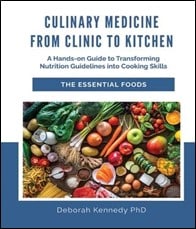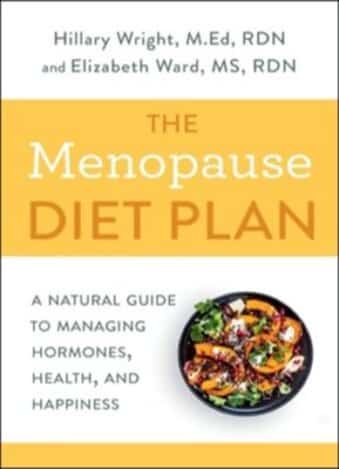
Julia started a new job as the registered dietitian nutritionist (RDN) at a continuing care retirement community. She noticed that the community’s assisted living and skilled nursing units each had a handful of physician orders for gluten-free diets. Julia decided to evaluate these orders to determine if they are based on a diagnosis of celiac disease, and then follow up with each resident to address issues or concerns with their gluten-free diets.
Celiac Disease in Older Adults
Celiac disease (CD) in older adults is not well-understood or well-recognized and is often over-looked as “normal aging”1 or misdiagnosed as irritable bowel syndrome.2 Symptoms can be subtle and digestive symptoms may be milder than in younger persons.1 It might be mistaken for medication side effects or symptoms of other medical conditions. Signs of micronutrient deficiencies may be the first and often the only manifestation of CD in the elderly. 3,4
Surprisingly, up to one third of cases are diagnosed in adults over 60 years of age, even though many have had CD for most of their lives.5 By one estimate, about 60% of celiac disease in those over 65 remains undetected.2 In some people, CD may not appear until adulthood, when it could be triggered or identified during GI surgery, stress, or viral infection, or as part of an evaluation of another problem.6
Management of Celiac Disease in Older Adults
Treatment of CD in older adults is the same as children and younger adults – a strict gluten-free diet for life. Recovery of intestinal villi may occur more slowly in older adults than in younger patients.1 As with younger adults, symptoms should improve gradually over time.
Gluten free diets can be difficult to understand and adhere to, expensive, and they eliminate favorite foods. Nutrient deficiencies, including iron, folate, calcium, and vitamin D can occur.7 Older adults bring a unique set of challenges to the management of CD. Although research indicates that they are often motivated to adhere to a gluten-free diet1, lifelong habits can be difficult to change, and older adults may not be motivated to make changes if symptoms don’t improve. Challenges with adhering to a gluten-free diet may be exacerbated by vision problems, difficulty reading food labels, barriers related to food shopping and preparation, memory issues or financial constraints.
In health care and post-acute care settings, a diagnosis of CD should result in a diet order for a gluten-free diet. Julia should counsel residents diagnosed with CD on the risks and benefits of the gluten-free diet for treatment, but the ultimate decision of whether to follow the diet is up to the individual. Some residents may choose to eat what they want despite a CD diagnosis. Julia should serve as a resource and provide support on issues related to managing their celiac disease.
Gluten Free Diets in the Absence of Celiac Disease
Gluten-free diets are also useful for those with non-celiac gluten sensitivity (a gluten intolerance in the absence of celiac disease). It is not known if gluten must be strictly avoided for life to manage gluten sensitivity.8 In many situations, people with non-celiac gluten sensitivity can eat some gluten and learn through trial and error that avoiding or limiting gluten minimizes their symptoms. For these individuals, a gluten-free diet may be ordered, but it is unclear if strict avoidance of gluten is needed. Because limiting or avoiding gluten may help with symptom management, food preferences should be taken seriously.
Julia discovers that a few residents’ gluten-free diet orders that are based on the individual’s or family’s preference, rather than a diagnosis of CD or non-celiac gluten sensitivity. “Going gluten-free” has been a recent trend for healthy adults and older adults. Julia knows that gluten-free living is not necessary for optimum health, weight loss, increased energy or other health claims unrelated to celiac disease.8 Even though Julia advises these individuals that a restrictive diet is not necessary, some residents and/or families disagree and want to continue a gluten-free diet, despite the expense and/or difficulty adhering to the diet. The facility should honor these preferences to the degree possible, and Julia should document in the medical record that the diet is based on preferences, not a medical diagnosis. Julia should also discuss the risks of following the diet, including unnecessary avoidance of favorite foods.
Obtaining Gluten-Free Foods
Food service operations may not always be able to purchase specific brands and types of gluten-free food from their suppliers. Julia needs to inform her residents/families if this is an issue, and let them know that they can bring gluten free foods into the facility as long as they follow the facility policies based on local, state and federal regulations for using food from outside sources.
The Bottom Line for Health Care and Post-Acute Care
Gluten free diets in health care facilities can be challenging on many levels. The first step for Julia is to determine which gluten free diet orders are based on diagnosis versus personal choice. Some older adults have a diagnosis of CD or non-celiac gluten sensitivity and require a gluten-free or gluten-restricted diet. These older adults need to be offered appropriate foods and encouraged to follow their diet, but the ultimate choice on whether or not to adhere to dietary restrictions is up to the individual. As the RDN, Julia should provide support and resources and counsel individuals according to their needs and preferences.
Originally published May 13, 2019.
References
- Celiac Disease: The Facts. National Celiac Association. https://nationalceliac.org/wp-content/uploads/2020/02/NCA-Fact-Flyer-Seniors.pdf. November 2019. Accessed October 18. 2022.
- Collin P, Vilppula A, Luostarinen L et al. Review article; Celiac disease later in life must not be missed. Aliment Pharmacol Ther. 2018;1-10. doi:10.1111/apt.14490.
- Rashtak S, Murray JA. Celiac disease in the elderly. Gastroenterol Clin North Am. 2009;38(3):433-446. doi.10.1016/j.gtc.2009.06.005.
- Ravindran NC, Moskovitz DN, Young-In K. The Aging Gut. In: Chernoff R, ed. Geriatric Nutrition. 4th ed. Burlington M: Jones and Bartlett Learning. 2014:250-251.
- Bernstein M, Munoz N. Nutrition for the Older Adult. Third edition. Burlington MA: Jones and Bartlett Learning; 2020:232.
- VanReken AW, Kay RE, Ireton-Jones CS. Medical nutrition therapy for lower gastrointestinal tract disorders. In: Krause and Mahan’s Food & the Nutrition Care Process. 15th ed. St. Louis MO: Elsevier; 544-578.
- Escott -Stump S. Nutrition & Diagnosis-Related Care. Ninth edition. Chicago IL: Academy of Nutrition and Dietetics; 2022:551.
- Case, S. Gluten Free: The Definitive Resource Guide-Revised Edition. Regina Saskatchewan Canada: Case Nutrition Consulting, Inc. 2022.












